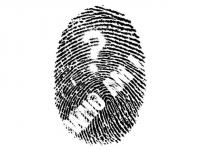NFC to stick finger in biometrics banking: Expert

While Australian banks have been elusive about plans to implement customer-facing biometrics technology, its use in banking will become mainstream in the near future, and may even be used in conjunction with other technologies, like NFC, according to Dr Ted Dunstone.

Yesterday, ANZ Bank CEO Philip Chronican said that the bank was exploring ways to introduce biometrics as a replacement for traditional payment identification methods, like PIN codes at ATMs, amid wider acceptance of such technology by consumers.
In a survey commissioned by the bank, 79 percent of Australians said that they were comfortable with fingerprint technology replacing banking PINs.
Chronican's logic is that PIN codes and signatures are easy to replicate, while biometrics provides a more secure verification method for banking. He expects that it will be "probably two to three years before we get commercialisation of biometrics in banking."
In terms of security, consumers already trust banks to hold much of their sensitive personal information, therefore, biometrics data should be no different, said Dunstone, who is also the CEO of biometrics consulting firm Biometix.
But what if somebody's fingerprints data were to be compromised? After all, it's easy to replace a PIN, but not so easy to replace a finger.
While ANZ's CEO saw a future where fingerprints could replace PIN codes, the reality is that traditional identification methods still need to work in conjunction with biometrics to ensure security, Dunstone said.
"Basically, I would not recommend single factor biometric authentication — so, just a fingerprint or iris scan," he said. "That means, we would need to introduce either biometrics and a card, or biometrics and a PIN."
Even the palm readers used by Ogaki Kyoritsu Bank in Japan require users to input a PIN.
But NFC-enabled smartphones can be used as an alternative to PINs and cards for this purpose.
"You can use the mobile to validate who you are at an ATM, with fingerprinting to verify that you are the correct holder of the phone," Dunstone said.
Both Westpac and ANZ have initiated their mobile wallet trials, where NFC smartphones can be used in lieu of debit or credit cards when making small purchases. Other banks have expressed interest in testing out NFC payments as well.
Dunstone also pointed out that fingerprinting technology has come a long way since it was first introduced. Anti-spoofing capabilities have drastically improved, and even if thieves do obtain a person's fingerprint details, it would be very hard for them to make artificial fingerprints to mimic real fingers, he said.
Is biometrics in banking even going to happen in Australia?Just like NFC, Australian banks have been toying around with the concept of biometrics for customer identification for some time. But while NFC seems to be making progress in the banking sector, biometrics appears to have been placed on the backburner.
In 2009, the National Australia Bank (NAB) rolled out a voice biometrics system for its telephone banking customers. Since then, there's been little movement of biometrics in the banking space.
"We continue to investigate the application of biometric technology, however, we maintain nothing can substitute knowing your customer and building strong relationships," said an NAB spokesperson.
Other banks, including ANZ, were equally hesitant in commenting about their plans for customer-facing biometrics.
While ANZ extolled the benefits of biometrics, and said that it was looking at a number of technologies, such as fingerprinting, facial recognition, and voice identification, Chronican was light on revealing any solid plans for implementation.
The Commonwealth Bank only said that it "is continually looking at new ways and technologies to improve customer security and experience."
Westpac provided a similar answer.
Biometrics are already being used by local banks for internal operations, according to Dunstone, and customer-facing biometrics technology is already being rolled out in places, such as Europe, South America, the Middle East, and Japan.
To some degree, he believes Chronican's statement that commercialising biometrics in banking in the next few years is achievable.
"Certainly, within two to three years it's possible for the banks to roll that out in a limited sense," Dunstone told ZDNet Australia. "Obviously, there are a lot of integration issues that need to be worked out, and so on, but I would expect to see this type of technology to start appearing in the financial services industry."
Fingerprinting or palm scanning would probably be the favoured choice for banks, he said, and new technology has made this method more accurate than before. Earlier this year, Ogaki Kyoritsu Bank in Japan introduced palm vein scanners to several of its ATMs.
Deploying biometrics technology is not a cheap endeavour, but it will not be "prohibitively" expensive, according to Dunstone.
"When you are rolling out something to a large clientele in an existing network, the integration components are not going to be cheap, but the component technology itself has fallen significantly in price, while the quality has vastly improved," he said.